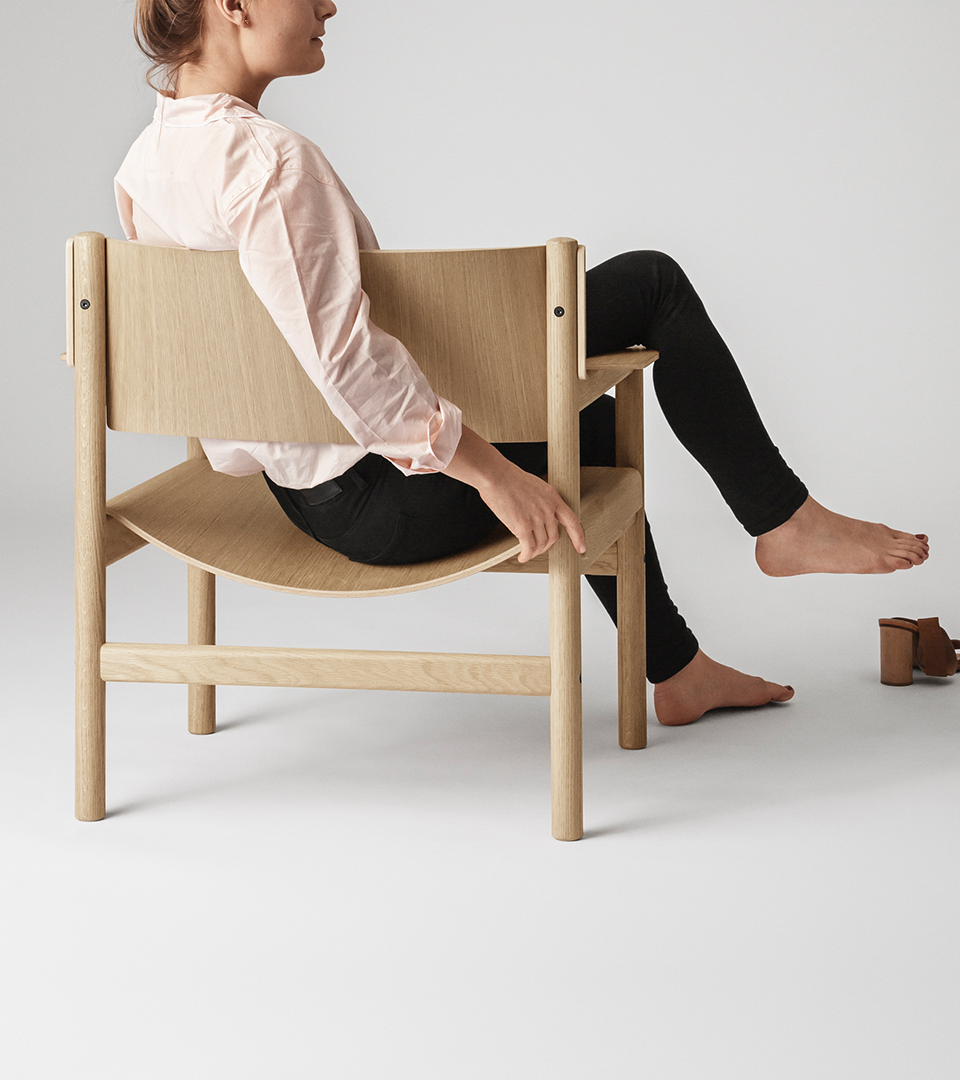Thomas Bentzen is a Danish designer working with products characterised by simplicity, rationality and functionality. He explores form and function and the potentials of the materials in his pursuit to design long-lasting and durable products. Thomas Bentzen works for Muuto, Hay, Louis Poulsen, Royal Copenhagen and Menu. He is based in Copenhagen.
One could say that working with the possibilities of the veneer and stretching it to its limits is a signature for some of your work. Where does a new design takes its beginning for you? Is in the user’s needs or maybe in the properties of the materials?
This idea for the Soft chair, of draping the seat and backrest with moulded veneer on a solid wooden frame was the starting point for the project. So in this case, the materiel and the idea of moulded veneer as textile was the beginning, but I knew the whole time that it was about a chair and a function — function should always be present in design, otherwise there is no need, and therefore no reason to produce in my opinion. Besides that, I try to push the limits of material and processes in all the projects I do — to innovate.


It seems that you are often driven by a strong interest in the materials and their properties. When you’re developing new designs, how do you pursue that interest?
Prototyping and model-making are key elements in my design process. I always work with physical models, all kinds of models in scale and 1:1 models. A small paper models can tell me a lot about the possibilities in veneer for example. I think, while I work with my hands, sometimes my hands think for me. Most of the design I do is driven by one or two materials and therefore it is always an investigation into the materials, their possibilities and limitations, and the production technology behind the materials.


With roots in the Danish design tradition and with a background as a craftsman, where do you see craft in industrial production? It’s not as visible as before, but is it still there?
When industrial production is done right, it is craftsmanship to me. To make complex, high-quality products made to last in mass production, is difficult and demands skilled craftspeople and production facilities. We designers have a role to challenge the materials, production, processes, and people so that we can help develop and maintain modern craftsmanship.


This idea for the Soft chair, of draping the seat and backrest with molded veneer on a solid wooden frame was the starting point for the project.
Thomas Bentzen











